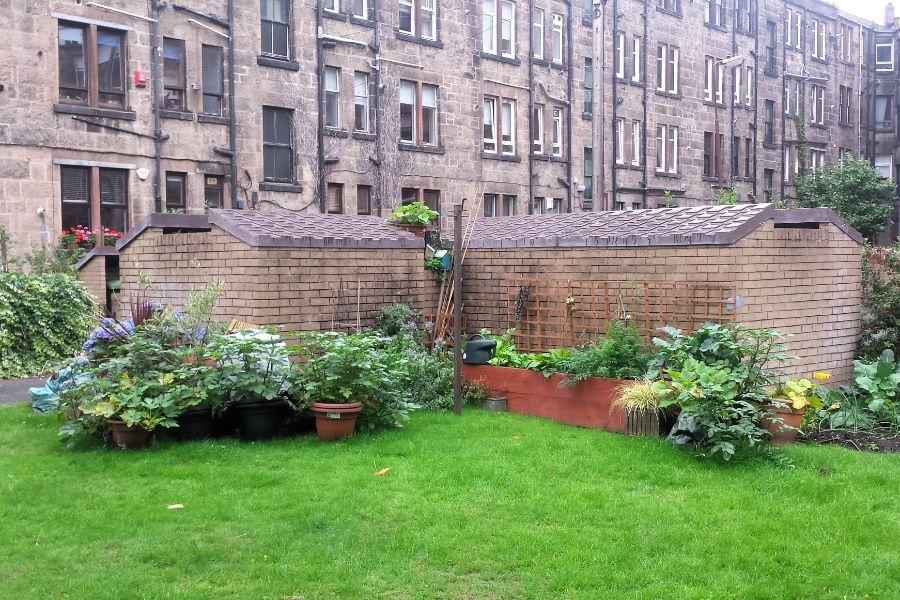
Edinburgh, UK is a city that wears its history on the surface-sandstone facades, Georgian crescents, steep closes, and four seasons of weather in a single afternoon. That character brings charm, and it also brings dust, salt air, and the practicalities of keeping homes, offices, and hospitality spaces clean in a place of festivals, tourism, and high tenant turnover.
Across the city, cleaning services span a wide spectrum: routine domestic and commercial cleaning, end-of-tenancy and student move-outs, deep cleans for heritage interiors, post-builders’ clear-ups, window and stonework care, carpet and upholstery treatments, and rapid-turnover support for short-term lets. Many providers now offer eco-friendly methods, flexible scheduling, and digital booking, while navigating local considerations such as communal stair cleaning in tenements, conservation-sensitive materials, and seasonal demand spikes around major events.
Choosing the right service often comes down to practical details: experience with older properties, insurance and accreditation, health-and-safety compliance, equipment provided, access arrangements, responsiveness, and transparent pricing-whether hourly rates or fixed-fee packages. This article introduces the landscape of cleaning services in Edinburgh, outlines typical offerings and costs, and shares straightforward criteria to help residents, landlords, and businesses find a reliable fit for their space and schedule.
Table of Contents
- Local cleaning challenges in Edinburgh tenements stairwells townhouses and new build flats
- How to read quotes with itemised pricing for deep clean end of tenancy Airbnb turnover and eco friendly options
- Reliability checklist including Public Liability Insurance Disclosure Scotland vetting and bring your own supplies policies
- Scheduling that suits the Scottish climate with fortnightly routines mould prevention and seasonal care for stone floors and sash windows
- Key Takeaways
Local cleaning challenges in Edinburgh tenements stairwells townhouses and new build flats
From historic closes to glassy penthouses, the city’s mix of architecture brings different cleaning quirks to the doorstep. Communal stairwells in older blocks collect wind‑blown grit from cobbled streets, sticky handrail residue, and fine dust from aging sandstone; ornate cornices and deep skirting in period homes trap webs and soot; and sleek contemporary interiors show every fingerprint on high‑gloss cabinets and micro‑scratches on LVT floors. Add in coastal air, autumn leaf mulch, and festival turnover, and it’s easy for everyday mess to accelerate faster than a standard routine can handle-especially where listed‑building rules limit abrasive methods or strong chemicals.
- Tenement closes: narrow landings, draughty corners, flaking paint, salt and grit underfoot, pram and bike scuffs.
- Townhouses: tall stairwells, delicate plasterwork, sash windows with paint chips, chimney dust and fine debris.
- New builds: silicone haze on tiles, smears on mirrored wardrobes, brushed‑steel marks, ventilation grille lint.
- Shared bins and stores: odours, leachate spills, and pest‑prevention needs near entryways.
The smartest approach blends gentle techniques with targeted tools: pH‑neutral stone-safe cleaners for treads and steps, soft‑bristle brushes for handrails, microfiber and HEPA filtration for historic dust, and low‑odour products for modern finishes. Timetables that respect quiet hours, factor‑managed access, and key‑safe protocols reduce disruption, while seasonal tweaks-like extra de‑grit mopping in winter, limescale control from hard water, and post‑festival blitzes-keep properties presentable without over‑cleaning fragile surfaces.
| Property | Main Challenge | Smart Fix |
|---|---|---|
| Tenement stair | Sandstone dust | pH‑neutral rinse + soft pads |
| Townhouse | High cobwebs | Extendable HEPA dusting |
| New flat | Gloss smears | Alcohol‑free microfiber |
| Bin area | Odour spots | Enzyme cleaner + dry sweep |
- Access: coordinate with factors and concierge; respect security entry systems.
- Timing: early slots for stairwells, post‑checkout windows for short‑lets.
- Protection: corner guards, felt pads on ladders, spot‑test on finishes.
- Seasonal: extra matting in winter; pollen and sea‑mist wipe‑downs in spring/summer.
How to read quotes with itemised pricing for deep clean end of tenancy Airbnb turnover and eco friendly options
Treat an itemised quote like a map to the clean you actually want. Each line should tell you what’s included, where the time goes, which materials are used, and how access is handled-especially in period flats, shared stairwells, and permit zones. Look for clear labour estimates and a visible split between labour, supplies, disposal, and add‑ons; vague “deep clean” wording without room counts or task lists invites scope creep and surprise costs. Confirm VAT status, travel or parking charges (Old Town and festival weeks can impact these), and whether a re‑clean guarantee is built in.
- Scope and exclusions: Rooms, appliances, interiors of cupboards, inside windows, high-level dusting, grout/descale, oven/hob, fridge/freezer defrost.
- Property profile: Bed/bath count, flooring type (stone vs. laminate), pets, post-build dust, balcony/tenement stair.
- Time model: Fixed price vs. hourly with a cap; number of operatives; estimated hours.
- Materials & kit: Eco detergents, HEPA vacs, steam, limescale removers safe for Edinburgh sandstone and enamel.
- Access & logistics: Key collection, lockbox, lift/no lift, parking/permit or loading bay, waste and laundry handling.
- Quality & proof: Checklist, before/after photos, agent-approved end‑of‑tenancy standards, re‑clean window.
- Pricing clarity: Line rates, VAT, weekend/festival surcharge, cancellation terms, insurance cover.
| Service | Line Item Should Show | Add‑Ons | Price Basis |
|---|---|---|---|
| Deep Clean | Room list + heavy areas | Oven, limescale, inside windows | Fixed per job |
| End of Tenancy | Agent checklist match | Carpet shampoo, blinds | Fixed + re‑clean clause |
| Airbnb Turnover | Time window + tasks | Linen hire, restock | Per changeover |
| Eco Option | Product list + method | Refills, microfibre | +5-15% premium |
For short‑let changeovers, the quote should define the turnaround window, linen cycles, consumables restock, bin/recycling, and a photo log-plus contingency for late check‑outs. For move‑outs, ensure oven, extractor, grout/descale, and cupboard interiors are clearly priced, with a re‑clean promise aligned to local letting agents. If choosing greener methods, ask for product names, certifications, dilution rates, ventilation times, and stone‑safe procedures; request a side‑by‑side variant (standard vs. eco) so you can weigh cost against indoor air quality and fabric care.
- Ask before you book: Define “deep” tasks, confirm blind/curtain handling, and whether mattresses/sofas are included.
- Access & keys: Lockbox support, key courier fees, proof-of-entry photos.
- City specifics: Festival surge, parking/permit charges, stair cleaning rules in tenements.
- Aftercare: Re‑clean timeframe, damage cover, and who signs off (you, agent, or host platform).
Reliability checklist including Public Liability Insurance Disclosure Scotland vetting and bring your own supplies policies
Reliable service in Edinburgh is built on transparent checks and traceable paperwork. Before any booking, ensure current Public Liability Insurance at a suitable level (commonly £2m-£5m), verified Disclosure Scotland screening appropriate to the setting, and a clear audit trail for who checked what and when. Documented policy numbers, expiry dates, vetting references, and reviewer signatures transform promises into practical reassurance and make compliance effortless during audits or building management reviews.
- Public Liability Insurance: Cover amount, insurer, policy number, expiry, and named parties.
- Disclosure Scotland: Check level (Basic/Standard/Enhanced), reference, and issue date.
- ID & Right-to-Work: Photo ID match and immigration compliance verified on file.
- Training & COSHH: Product handling, risk assessments, and SDS access confirmed.
- Safeguarding & Keys: Keys/alarms protocol, lone working, and incident reporting lines.
- Quality Controls: Spot checks, feedback loops, and service-level benchmarks.
| Check | Why | Evidence |
|---|---|---|
| PLI cover £5m | Accident protection | Certificate + expiry |
| Disclosure Scotland | Trust & safety | Ref no. + date |
| Right-to-work | Legal compliance | ID check log |
| Training/COSHH | Safe product use | SDS access proof |
| BYO supplies policy | Consistency & hygiene | Product list + SOP |
Clarity on supplies is the other pillar. Decide whether professionals bring their own products and equipment or use client-provided items, and define standards: eco or fragrance-free options, allergy notes, colour-coded cloths to avoid cross-contamination, HEPA-filter vacuums, and limescale solutions suitable for Edinburgh’s hard water. Keep a concise inventory with brand names, dilution ratios, and re-stock triggers, plus safe storage and waste disposal practices aligned with local guidance-so consistency, hygiene outcomes, and cost transparency are maintained across every visit.
Scheduling that suits the Scottish climate with fortnightly routines mould prevention and seasonal care for stone floors and sash windows
Edinburgh’s sea air, the occasional haar, and cosy tenements call for a plan that’s gentle but relentless against moisture. A fortnightly rhythm keeps mould from taking hold while preserving the character of stone floors and sash windows. Think light-touch maintenance done often: pH‑neutral solutions, minimal water, and airflow as routine. Prioritise dry days, crack the top sash for cross‑ventilation, and pair swift surface care with humidity control for a finish that looks cared‑for, not scrubbed raw.
- Every 2 weeks: Dry-dust stone flags, then mop with a pH‑neutral cleaner; finish with a microfiber buff to close pores.
- Sashes: Wipe rails, beads, and meeting rails; clean weep holes; dry the putty line to deter spores.
- Airflow: Ventilate 10-15 minutes; dehumidify to 45-55% RH to break the condensation cycle.
- Detail checks: Inspect draught seals, flaking paint, and hairline gaps; spot‑treat with an alcohol‑based spray where mould tries to return.
Season by season, tune the same routine to the weather. Winter favours shorter, drier sessions with extra dehumidifying; spring invites a deeper reseal and grout inspection; summer’s about UV‑safe protection and shade; autumn prepares for storms with putty checks and leaf‑free drainage. Keep it simple, keep it repeatable-and let small habits do the heavy lifting.
| Season | Stone Floors | Sash Windows |
|---|---|---|
| Winter | Dry mop; minimal water; mats at entries | Condensation wipe-down; boost RH control |
| Spring | Rebuff and reseal light‑use areas | Clean tracks; check cords and putty |
| Summer | UV‑safe protector; gentle weekly dust | Light wash; ventilate early/late |
| Autumn | Grout inspection; lifted‑edge repairs | Clear weep holes; draught seal check |
Key Takeaways
In a city where cobbled closes meet glass-fronted offices, cleaning is less a chore than a quiet rhythm that keeps Edinburgh moving. From tenement stairwells and listed townhouses to student flats, short-let turnarounds, and post-build sites, the right service is the one that fits the space, the schedule, and the standards.
A practical close to the search often looks simple: clear scope, transparent pricing, insurance in place, trained staff, and methods suited to both heritage materials and modern finishes. Asking about eco-friendly options, waste handling, and accreditations can prevent small details from becoming big distractions-especially through festival surges, winter storms, and end-of-tenancy peaks.
In the end, a well-briefed, well-matched team does more than polish surfaces. It lets homes and workplaces breathe a little easier beneath the castle’s silhouette, ready for whatever the next day in Edinburgh brings.





